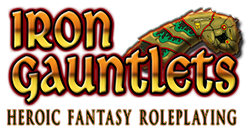
The sidhe (pronounced “shay”) are similar to the elves. In appearance, they are like thin humans with golden hair, green eyes, and pale skin that seems to glow. Their demeanor is calm and friendly, and they are slow to anger. They are generous to friends, and merciless to enemies. They are patient, especially when settling old scores. They do not strike out at someone who has crossed them, but instead will deal small blows to that person, slowly taking away the reputation, family, and fortune. It takes years for the sidhe to destroy someone that has brought them to anger, and it is a complete destruction.


As a whole, the sidhe are peaceful. They view all things as interconnected and equal, with no thing more important or more valuable as any other. They enjoy music, and magic for the possibilities that it contains. They do not use magic in an off-hand or reactionary manner. They use it carefully, and will deliberate to ensure that it is the wisest action. They will only use magic quickly when there is no other choice.


The sidhe are craftsmen, and build powerful items imbued with magic (relics). These items are rare, and are only seen outside of the sidhe mounds if they have been given as a gift. The sidhe will only offer their magic to heroes who have proven their friendship.


Sidhe live in fertile plains and hills. They build mounds that blend into the landscape and are difficult to spot. The entrances to the mounds are protected by magic, so that they will only be revealed to those whom the sidhe will. The mounds lead into deep underground caverns that are shaped from the earth. Most of the sidhe communities are formed in sets of circular tunnels and round rooms, which are seldom larger than one-hundred feet in diameter. The overall diameters of the communities are usually less than two-thousand feet. There are no doors in sidhe communities. The rooms are illuminated by small spheres that cast a magical light, about the strength of dim sunlight. Sidhe are immortal, but they may succumb to disease, poison, or fatal damage. They mature until the age of twenty or thirty, when physical aging stops.


The few sidhe who go into the mortal world are often mistaken for civilized elves or beautiful humans. There are many reasons for the sidhe to enter the mortal world, but the most common is to aid a hero with whom they have befriended.

 Because the sidhe have a natural attraction to magic, they begin play with 1 level in either the totem or crafting ability at the discretion of the player, who may also assign 1 point to any crafting-based skill during character creation, but may not increase crafting-based skills further unless the character possesses the wizard vocation. Sidhe characters may possess either the tribesman or cavernfolk background, in addition to the frail and vulnerability (poison) gimmicks.
Because the sidhe have a natural attraction to magic, they begin play with 1 level in either the totem or crafting ability at the discretion of the player, who may also assign 1 point to any crafting-based skill during character creation, but may not increase crafting-based skills further unless the character possesses the wizard vocation. Sidhe characters may possess either the tribesman or cavernfolk background, in addition to the frail and vulnerability (poison) gimmicks.


The magic of the Sidhe is powerful, and their relics may be used by anyone. There are prices to be paid for their use however. The relics require either a payment of some sort (such as a special quest for the sidhe or the destruction of a specific enemy), or the relic will have a drawback. When creating a sidhe relic, the price or the drawback should be connected to the relic’s use or function and at a high enough cost to keep it from being used too often.


 Prized Relic: Cauldron of Restoration
Prized Relic: Cauldron of Restoration

This is a large iron cauldron, eight feet in diameter, with a solid lid, and weighing five-hundred pounds. The cauldron is always filled with liquid. If any of the liquid is spilled, the cauldron will lose its magical properties. Although the sidhe can easily replenish the liquid, they will not do so unless the cauldron is in their ownership. The cauldron is seldom given away, but loaned to those who defend their causes.


The cauldron restores the recently dead (a body up to five days deceased) to life for three days. At the end of the three days, the restored body will return to death, and may not be restored again. Living bodies that are submersed in the liquid will be completely destroyed. The liquid is harmless until it completely covers a body.


In order to restore a body, it must be completely submerged in the cauldron. The individual will return to life, fully healed. However, that person will be unable to communicate in any way—he cannot make a sound, write, or use any other means of relaying complex thoughts or ideas (simple gestures may be allowed.) The restored individual will retain all memories and will be able to use all of his original skills and abilities, unless they involve speech or communication. If the restored individual is killed again, the body cannot be restored.


The cauldron may be used to restore up to one-hundred individuals to life before the liquid is rendered useless.

